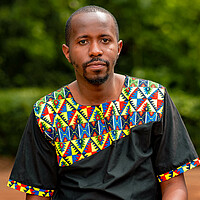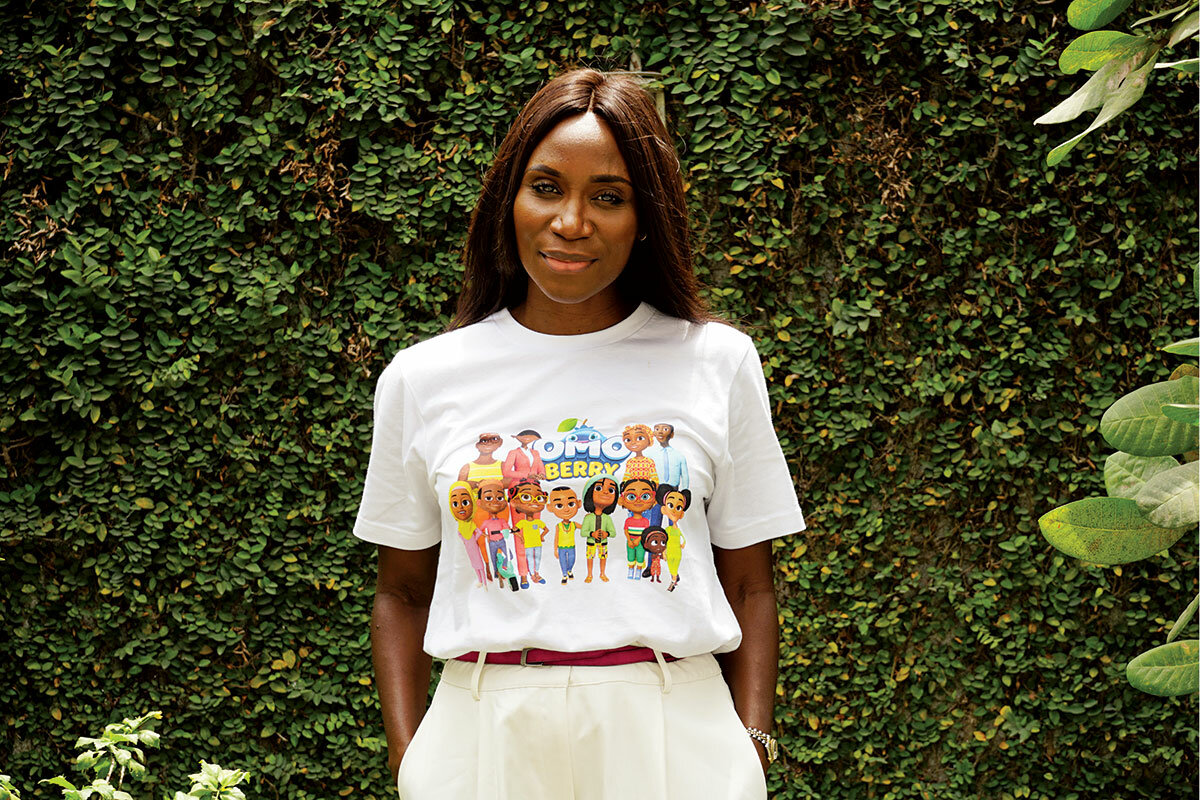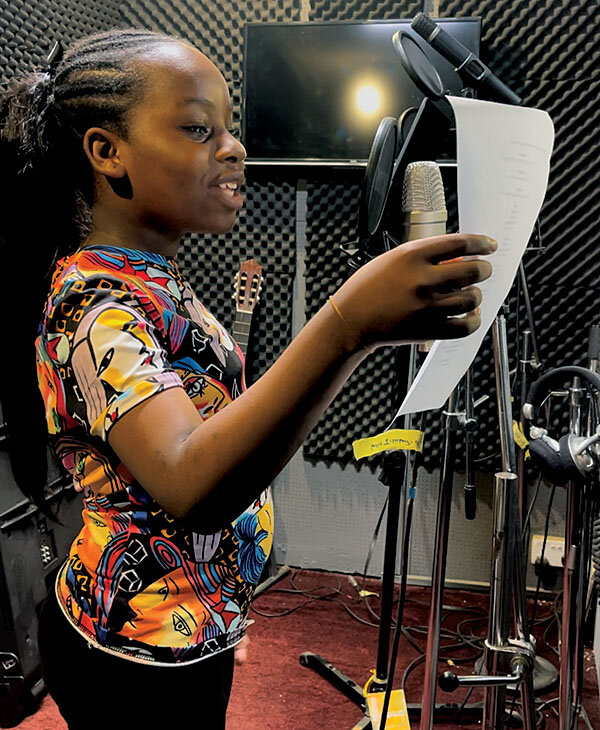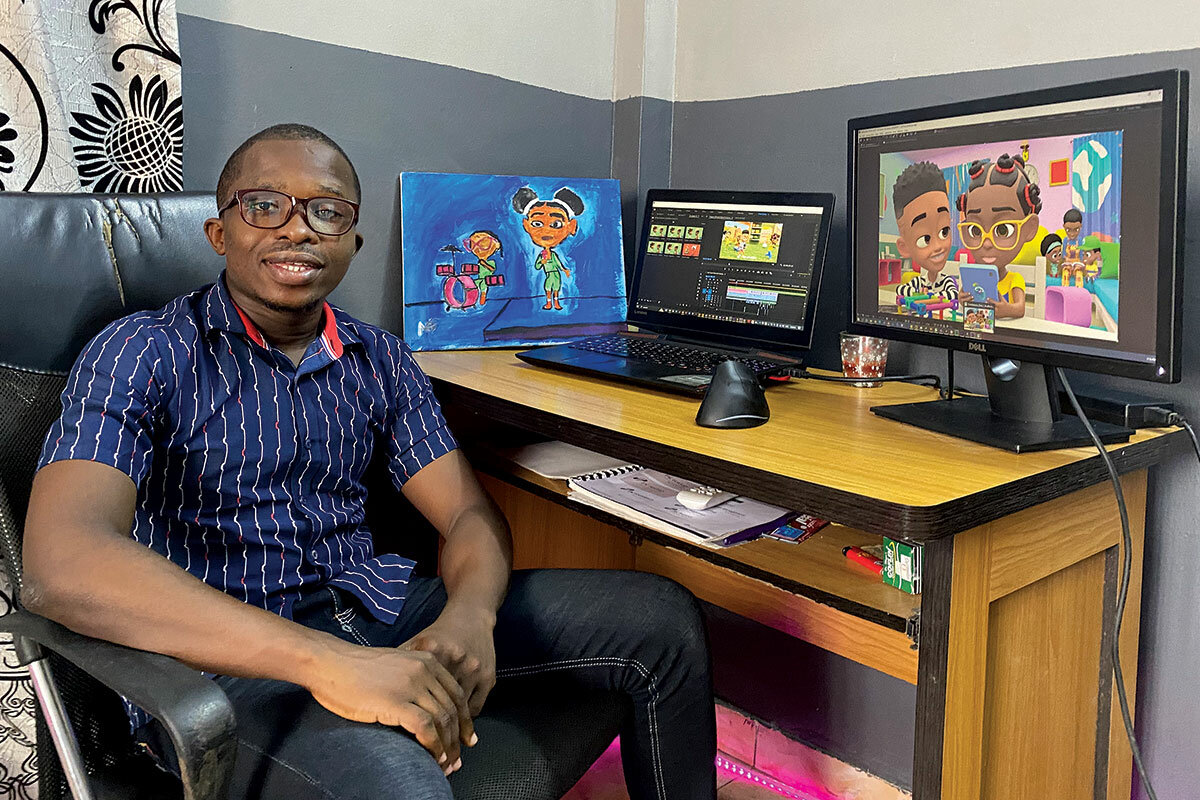Beyond ‘Sesame Street’: African kids’ shows go local
Loading...
| Lagos, Nigeria
As a child in London in the 1980s, Agnes Soyode-Johnson spent her weekend mornings with her siblings, watching cartoons like “Scooby Doo,” “Dennis the Menace,” and “Inspector Gadget.”
The child of Nigerian immigrants, she rarely stopped to think about why so few of the characters looked like her. Then, in 1992, she saw a movie that changed everything. As Aladdin and Jasmine rode their magic carpet over an Arabian desert kingdom singing about a new world, Ms. Soyode-Johnson marveled at their dark hair and brown skin.
“I loved it so much because I could relate,” says Ms. Soyode-Johnson. “I felt seen.” Fast-forward three decades. Ms. Soyode-Johnson – now a TV producer living in Lagos, Nigeria – was trying to keep two toddlers busy during a global pandemic. Her house echoed with the songs and squeals of her kids’ favorite TV shows: “Cocomelon,” “Peppa Pig,” “PAW Patrol,” and as in her own childhood, she noticed that all the shows her kids watched were from the West. She wanted her children to feel as she had when she saw “Aladdin” all those years ago. So she created “OmoBerry,” a YouTube cartoon that features a cast of young characters from across Africa.
Why We Wrote This
A story focused onAfrican kids have long grown up on a diet of Western TV cartoons featuring characters whose lifestyles do not match their audiences. Now, African animators are offering an alternative.
The popular program is part of a larger movement by African animators to make shows that reflect the experiences of the continent’s children. Many, like “OmoBerry,” are self-published on YouTube and other free platforms, sidestepping the need for support from big Western animation producers.
“Children’s literature is a socializing agent and it’s important for young ones of every color and creed to grow up seeing fictional characters who look and sound like them, and whose world mirrors their own,” says Joyce Nyairo, a Kenyan cultural analyst who’s currently a fellow at the Institute for Advanced Study in Berlin.
But for African kids, that’s often easier said than done. Only recently have major Western media companies like Netflix and Disney started to create animated shows for and by Africans.
“Kiya & the Kimoja Heroes,” a series about a 7-year-old African girl who has superpowers in dancing and martial arts, premiered on Disney Junior last month. And Netflix is developing a series called “Supa Team 4” about a team of teenage superheroines in Lusaka, Zambia.
In the meantime, however, many African parents, like their counterparts around the world, are turning to YouTube. Children’s content is a big profitmaker for the platform, with “Cocomelon” ranking as one of the most viewed channels in the site’s history.
African animators have tapped into a particular subset of this market called “edutainment,” which combines classic kids’ TV storylines with lessons about topics like science, history, and manners. Think “Dora the Explorer” teaching Spanish vocabulary, or Count von Count on “Sesame Street” helping generations of kids learn their numbers. And now, there are the young people of the cartoon “Ubongo Kids,” who teach math and science as they solve mysteries in their Tanzanian village. And Super Sema, a Kenyan superhero who uses powers boosted by science and the arts to save her village from a villain.
“OmoBerry,” meanwhile, has four main characters, who are all Nigerians between the ages of 5 and 7. They are joined by a supporting cast from around the continent on adventures that address topics such as manners, math, and African history.
In an episode called “Egyptian Pyramid Song,” “OmoBerry” characters visit Egypt to learn how pyramids were built.
“Ancient means old,” the characters sing. “From long long ago / When the rest of the world was in doubt / Africa figured it out.”
Fara Akinrinmade, a 10-year-old who voices one of the show’s children, Chiamaka, says she feels good when she sees a character like her that looks like her, has hair like hers, and speaks like her.
“I’m sure that if I met her one day in real life, I could really relate to her and we could be best friends,” she says.
Drawn to Nigeria
Ms. Soyode-Johnson always felt a strong connection to Nigeria. Her mother, who moved to the U.K. in the 1960s, was very passionate about ensuring that all of her six children knew their identity and made a point of taking her children to Nigeria on holidays.
So even as Ms. Soyode-Johnson built her life as a television producer in the U.K., she always felt “a part of me was missing,” she says. In 2013, she moved to Nigeria, and soon became a decorated producer of a Nigerian web series.
But it was becoming a mother that made her see the opportunity in African animation.
“It was just really important for my kids to be able to experience an inclusive environment in the content that they watch, knowing that that wasn’t something that I was able to experience growing up myself,” she says.
She decided to tackle this gap. She partnered with two colleagues in the entertainment industry – Gbenga Ajetomobi, a Nigerian 3D animator, and Charlie Buffin, an American entrepreneur – and started Limitless Studios. “OmoBerry” was their first project.
“Paving the way for others”
The partners first raised money from family and friends in 2020 before launching the show the following year. So far, they have raised a total of $1.2 million for the show, mostly from venture capital firms.
This money goes to paying for a team of 25, largely in Nigeria but also as far afield as South Africa and the United States. They include animators, a scriptwriter, and an early learning expert.
“OmoBerry” aims to be profitable in the next year and a half, Ms. Soyode-Johnson says, and currently generates revenue mainly from YouTube ads.
But it also has content licensing deals with other streaming platforms and sells branded merchandise in an online shop. Limitless Studios also recently signed a deal with Platoon, a music distribution company owned by Apple, to distribute “OmoBerry” music.
As of late-April, the “OmoBerry” YouTube page has 183,000 subscribers and its videos have garnered more than 65 million views.
“We just hope that OmoBerry is paving the way for others within the space to realize, ‘Okay we can do this. African kids deserve this … and there is a market for it,’” Ms. Soyode-Johnson says.









